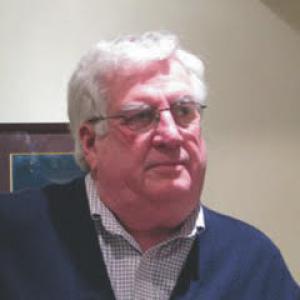
Reviewer John Cowans: John lives in
retirement in Chester, NS ,where he has been an Instructor with
Seniors College Association of Nova Scotia.
He is currently working on a personal memoir, Other People’s Children, and his first poetry collection, Hope.
Author: Sally E. Svenson
Publisher: Dog Ear
Publishing (2012)
ISBN: 978-1-4575-00776-2
Follow Here To Purchase Lily, Duchess of Marlborough
Author: Sally E. Svenson
Publisher: Dog Ear
Publishing (2012)
ISBN: 978-1-4575-00776-2
A short time after Lily Price Beresford
died on January 11, 1909, probably of cancer, the chairman of the
Dorking Town Council in Surrey, England, where Lily had lived, said
of her: “... she was a true, great and noble-hearted woman, ever
ready and anxious to do good “ As well, the London Times eulogized
her as “... an American lady who had won for herself a secure place
in the affections of the British people.” Eventually a stone mosaic
memorial to her was placed in St. Martin’s Anglican Church and a
street was named after her. How did a young woman from Troy, NY
become a pillar of British aristocracy, close friend of Winston
Churchill, shunned by the Prince of Wales, yet accepted by Queen
Victoria? This excellent biography is Lily’s extraordinary
story.
Sally Svenson, the author of Lily, Duchess of Marlborough
(1854-1909): A Portrait with Husbands, is a New York City based
author who has written articles for a number of commercial and
scholarly journals about late nineteenth century American social
topics. She also writes about architecture; her book on vernacular
church architecture, Adirondack Churches: A History of Design and
Building, was published in 2006.
Lily Price was born in Troy,
NY on June 10, 1854. Her parents were well-to-do, her mother’s
family prospering first in groceries and then in real estate. Her
father was a navy careerist who became a Commodore after the Civil
War. Lily, a student briefly at the Troy Female Seminary, later
called the Emma Willard School, moved to Washington with her mother
after her grandmother’s death to the elegant home of her great aunt
Phoebe Tayloe, whose husband was a well respected leader of
Washington society. Lily, known as ‘a belle and a beauty’, spent
her young adult years traveling between Troy and Washington, and in
1876 accompanied her great aunt to Europe. It was in that same year
that she met her first husband, Louis Carré Hamersley.
Lily
was introduced to Louis Hamersley by great aunt Phoebe at her
Washington home. The Hamersley’s were extremely wealthy New York
merchants and at the time of their marriage in 1879, Lily was 14
years younger than her husband. But then, “What was wrong with
marrying for money and position where there was also respect and
affection?” Lily and her new husband moved to his father’s Fifth
Avenue NY brownstone and there they carried on a fashionable social
life being part of the legendary “Four Hundred”, taking an active
role as founding members of the new Metropolitan Opera House, and
establishing a country home on 60 acres of land overlooking Long
Island Sound. Louis’s sudden death at the age of 43 in 1883 left
Lily devastated but also very rich as Louis’s estate amounted to
over three million dollars. Lily’s inheritance enraged Louis’s
family and 16 angry members contested the will to which there was no
settlement until 1891.
In 1888, Lily’s name began to be linked
romantically with George Charles Spencer-Churchill, Eighth Duke of
Marlborough, a divorcee who had succeeded to the title and Blenheim
Palace, the grandest home in Britain, in 1883, but whose sexual
liaisons had damaged his reputation. Like many members of the British
gentry with enormous estate expenses, Marlborough supposed that
marriage to an American heiress would save the day. For Lily such a
merger was not without benefit propelling her as it would to the very
apex of British aristocratic society. Their marriage took place in
1888 and lasted until the Duke’s untimely death from heart failure
in 1892. During their happy life, Lily contributed fully not only to
the upkeep of Blenheim Place but also to the improvement and
advancement of the estate in general. She was also able to overcome
Queen Victoria’s aversion to the Duke of Marlborough as witnessed
by her presentation at Court in May 1889.
During Lily’s
widowhood from 1892 to 1895, she lived first in Brighton and then in
Dorking, Surrey as Chatelaine of Deepdene an elegant house set on
4000 acres; there she spent her time developing her cattle herd,
building new tenant cottages, growing orchids, and occasionally
salmon fishing. In 1895 she married Lord William Beresford, VC,
renowned horseman, former Military Secretary to the Viceroy of India
to whom she bore a son in 1897. Beresford died in December 1900 never
having really recovered from a severe riding accident in 1896. In
1909 Lily became ill and died of cancer leaving her young son of
nine.
This is a carefully researched, well written,
meticulously documented biography enjoyable to read but frustrating
for a number of reasons. This is a complicated historical document
and the reader is often confused as to dates and family connections.
Certainly this would be alleviated by one or two family trees as
appendices and the reading experience would be further enhanced by a
few more photographs of the Churchills, of Jennie Jerome, of Louis
Hamersley, and of Lady Colin Campbell to suggest just a few. As well,
a list of all illustrations would prove helpful.
Nevertheless,
this is an exciting book about a charming, kind and powerful woman
living in worlds with which few of us are familiar.